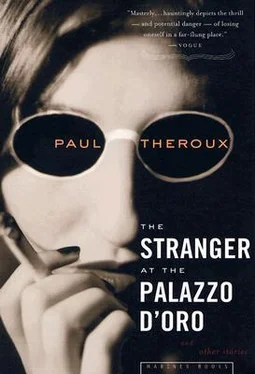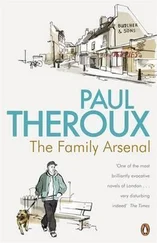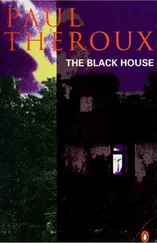She turned to climb the church stairs, and I followed her, keeping my distance, waiting a few seconds after the big door closed on her before opening it again. The bad light blinded me as I entered, I stumbled in the shadows, and I paused behind a pillar until I could see clearly.
Two confessionals were in use. In the pews near them people were waiting, some of them kneeling, some sitting, waiting their turn to tell their sins.
The skinny girl was walking slowly up the center aisle trying to decide where to go. We knew that in confession some priests were stern and some friendly. I had no idea which priests were in the confessionals, but I knew where to go when the girl chose. I wanted to be near her but not next to her. Her confessional had two compartments for people to confess. The girl was in the line that fed into the right-hand side, and so I sat two pews behind her, in the line for the left-hand compartment, five people ahead of me, five ahead of her. She knelt and prayed.
Above her was a stained-glass window — Saint Rose of Lima, first saint in the Americas, from a rich family; but, the nuns told us, she decided to serve God. The next window showed Saint Theresa of Avila. She was famous for having a vision of Hell, another nun’s story: a tiny room made of white-hot metal in which she could neither stand nor sit, flames on the walls, where you burned for eternity.
Every time I saw Saint Theresa’s odd comical headpiece and pleated cloak I was reminded of this hot room in Hell.
That was why we were going to confession. If you were not in a state of grace, with a stainless soul, you went to Hell when you died and you stayed in the flames forever.
Saint Francis, in another window, was a relief to me, the way the birds fluttered around his head — he spoke to birds, they talked back to him. On his hands were wounds, the stigmata. The cuts did not surprise me. If you were very holy, God made your hands and feet bleed, the way Jesus had bled during the crucifixion. I saw the wounds as a Jesus-like achievement, not something that was painful but a sort of reward, a bloody badge, and the proof of holiness.
People left the confessional with their heads down, and other people entered, looking anxious. We slid along the pews, awaiting our turn. Each time the priest began to hear someone's confession a window inside was jiggled open, like a kitchen cabinet. Then the priest pronounced a blessing, and when the confession was done he shut the slider with a smack and opened the one on the other side.
The girl was kneeling, praying. I tried to pray, but above my head the stained-glass window showed Saint Michael spearing the devil, his snaky tail whipped to one side. The windows were full of snakes. Saint Patrick holding a staff was casting wiggly snakes out of Ireland, and the Virgin in her window was squashing a squirming snake with her bare feet.
I looked from one snake to another, marveling at how fat and healthy they seemed. These evil things were the only images in the windows that were full of life, even struggling to survive as they were, and the saints were overcolored, with big sleeves and fat faces and dead eyes, and halos like gold donuts.
Thup-thrip, the jiggling slider closed on one side of the confession box, and thrip-thup, opened on the other. The girl was gone from the pew in front, so I assumed she was inside the confessional and perhaps the mumble I heard was hers. Since I knew the confession formula, I could follow the high points of what she was saying. Beneath the loose curtain I could see her scuffed shoes and falling-down socks.
“Bless me, Father, for I have sinned.” After a pause, a breath, she continued. “It has been blee weeks since my last confession. Blee blee fault blee times. Blee my mother blee.”
Hearing her say the word “sinned” made me eager and hot, and there was more.
“Blee blee blee impure thoughts blee times.”
Lifting my hands to my face and blinding myself I saw in my dark damp palms someone new, not a pale skinny girl but someone friskier and fleshier, who committed sins and suffered guilt; someone like me.
“Blaw blew blee occasion of sin?” the priest asked.
“Yes, Father.”
“Blah blay else?”
“No, Father.”
“Blay blee Hail Marys and blaw Our Fathers and a good Act of Contrition.”
“Oh, my God, I am heartily sorry for having offended thee,” she replied. “I detest all my sins because I dread the loss of Heaven and the pains of Hell.”
As she gulped and recited in a quavering voice I realized that I was in love with her — hearing her confession, her uncertain and guilty voice, her pathetic expressions of sorrow, a tone that said: I am sorry but I know I will sin more and I will have to come back here and confess my sins all over again.
Thup-thrip. Then she was pushing the limp brown confessional curtain aside and ducking out, and as she did, heading for the altar, her hands clasped, her head lowered, her eyes were on me, and she looked happy.
Instead of going into the confessional I slid out of the pew and followed her to the altar rail. I knelt beside her. The heat of the vigil lights, the flickering bank of candle flames, the smell of scorched wax, the warmth of the altar, and the sooty lingering whiff of incense. She was mumbling prayers, her forehead resting on the altar rail. I watched her out of one eye, but when I turned away and pretended to pray she got up and left the church.
So only then did I go to confession, and now I had a descriptive phrase for my sins: impure thoughts.
“What happened yesterday?” Father Staley asked from the pulpit on Holy Thursday, and he waited a while, too long, and I was worried, because I was thinking about yesterday. Finally he said, “Judas was plotting to betray Jesus yesterday. What happens today?” The priest leaned forward and spoke angrily. “Today, Judas betrays Our Lord.”
Father Staley was speaking directly to me. I could not look at him.
“And so Christ’s message on Holy Thursday,” he said, and he raised a flopping sleeve and shook his white finger at me, “Christ’s message on Holy Thursday is, prepare to suffer.”
She was sitting in front of me. I thought she had seen me on the way in. She had seemed to hurry ahead. How I loved her. Who was she?
“Tomorrow is Good Friday. Christ knew that he was going to be crucified. He knew that nails would be driven into his hands — big spikes, like the ones carpenters use. Driven into his feet. And a crown of thorns. Not the sort of thorns you see on rose bushes. These are big thorns — inch or so — you find them in the Holy Land. They didn’t set the crown of thorns on his head like a hat — they jammed it down so the thorns pierced his flesh. Drove the thorns into the bone of his skull!”
Father Staley waited a little, picking at the dead skin on his fingers.
“He knew this was going to happen. He had been told. It was written in the Scriptures. Holy Thursday, when Christ was betrayed by Judas, he knew he was going to suffer and die. ‘That thou doest, do quickly!’”
She was listening with her head and shoulders, a stiff attentive posture, her hair out of place. I loved her loose hair, her untidy clothes, her twisted collar — one side up, the other down, the smudge on her upper arm where she had brushed the church door perhaps.
Something also told me — the way she sat at a slight angle — that she was aware that I was behind her. If she had turned just a fraction more she could have seen me. Though I was listening to the priest, I was watching her the whole time.
“The example of Christ’s suffering has inspired many people to suffer themselves — to become better Christians. Maria Goretti was just a poor pious girl in a small Italian village. She was twelve years old. She did not know that Christ had chosen her. What was the choice he offered? It was to give way to the devil or to die. The devil lived in the village. His name was Alessandro Serenelli.”
Читать дальше












